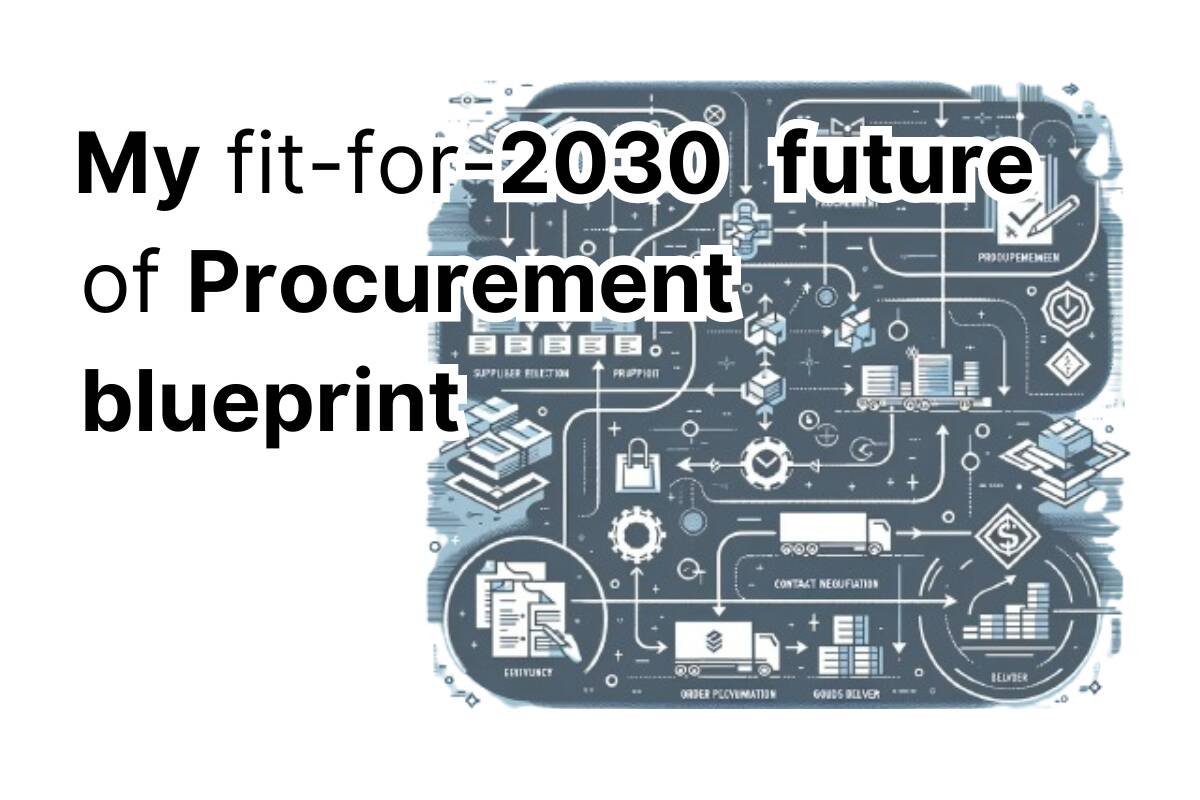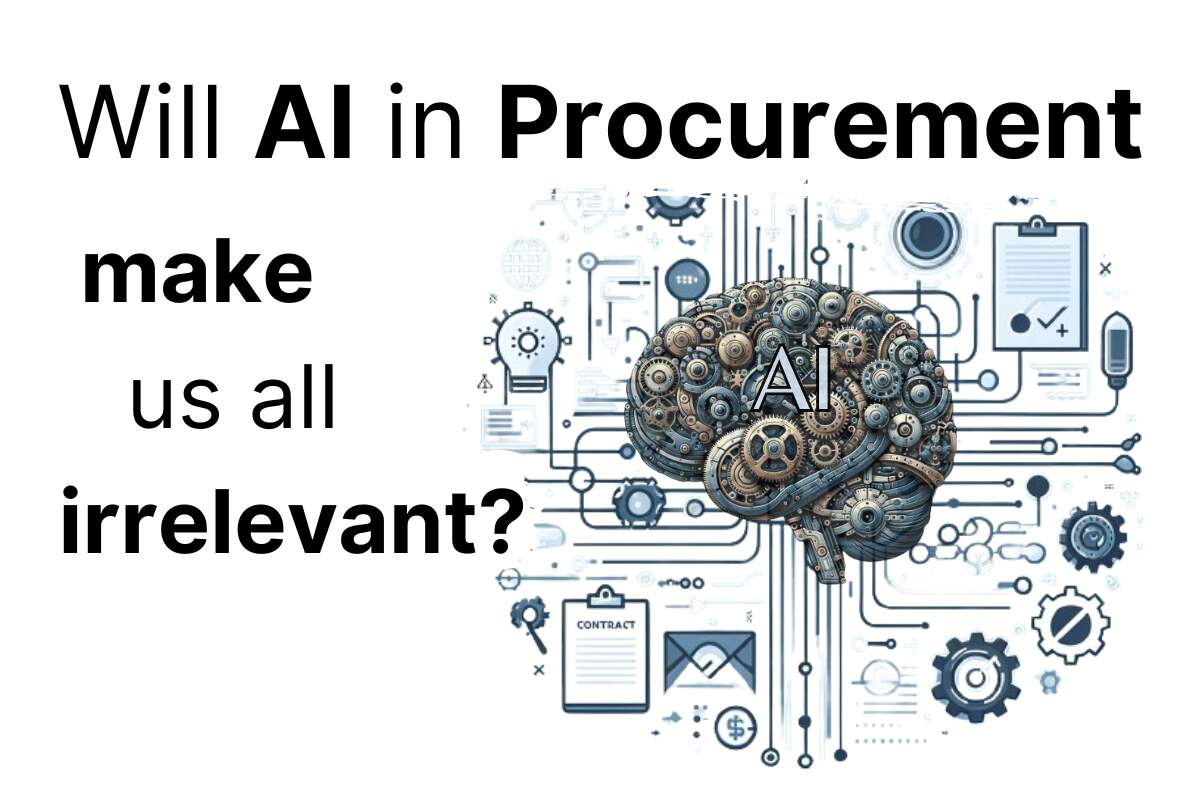Not many people outside of our profession understand what is Procurement and what we do. Thus, it’s not surprising that investment into digital procurement tools has been behind tech investments into other departments over the past 20 years.
So, how can deploying the latest technology in procurement management help the bottom line? Read on to understand how a medium-sized business that’s barely surviving can become a thriving organisation. Procurement tools will plug those leaky holes in your spend with external suppliers.
How can investing in digital procurement lead to a better P&L?
A 2.5% reduction in cost can drive the same result to your bottom line as a 10% increase in sales.
And therein lies the problem of getting procurement to have a bigger influence on companies’ bottom line.
If there is a lack of understanding of how a procurement excellence strategy can help drive bottom line, then CFOs are often blind to the benefits that digital procurement can bring. Especially once you get out of the corporate world and into smaller and medium-sized enterprises (SMEs).
I’m considering here businesses with less than £/$/€ 250 million in annual revenue. Let’s face it, not many businesses of this size have a mature, strategic procurement function.
There’s usually a small procurement team, consisting of a Head of Procurement who probably has some experience of working in a large enterprise. In their team there will typically be team members who are performing mostly operational, day-to-day tasks.
Eliminating, delegating and, most importantly, automating what these team members do is the key to unlocking additional productivity from existing resources. This will enable your team to become more strategic in their daily operations.
Here are just a few examples of how top procurement software solutions can move the needle and drive better results from your existing procurement team.
- Purchase to pay software with a mobile-first interface that busy stakeholders actually enjoy using
- Utilising technology to assist with and drive a supplier performance management process that uses subjective feedback from stakeholders alongside hard KPIs
- Supplier collaboration portals to drive innovation and real time project management without email or spreadsheets
- Spend visibility i.e. through a spend analysis report or a spend analytics dashboard
- Increasing operational efficiency by automating transactional or non-core tasks
- E-auction or sourcing software to digitise the RFx process and store the data in one accessible central place. Ditch C-drives, email inboxes or clunky Sharepoint sites as data silos.
- Vendor lifecycle management portals to improve the quality of vendor master data, which then reduces delivery delays or accounts payable issues.
Would you let someone with no sales experience lead a customer meeting?
Every company knows what they sell. Yet hardly any TRULY have a real grip on what they BUY. And when you think about it, this is madness.
Let’s take a medium-sized business with a £/$/€ 100 million annual turnover and around 500 employees.
If they’re a manufacturing company, then typically around 60% (£/$/€ 60 million) of their revenue will be spent on goods and services from external vendors:
- Raw materials
- Operating supplies (MRO and consumables)
- Sales, marketing, administrative and regulatory expenses (SG&A)
- Logistics & distribution services
Add on top of this about a quarter (25%) £/$/€ 25 million of their turnover that is made up of labour costs. This will be both salaried employees as well as contingent workers.
Which then leaves circa 15%, or £/$/€ 15 million, left over as pre-tax profit.
The numbers will differ slightly from business to business, but these are pretty typical for your average manufacturing company.
So, this then begs the uncomfortable question: Who is managing this £/$/€ 60 million that is being spent on goods and services from external suppliers?
A company wouldn’t send a Maintenance Engineer or HR Assistant to sell their product to a potential customer.
Likewise, these employees shouldn’t be allowed anywhere near your strategic suppliers for commercial negotiations. They need the guidance or presence of an experienced procurement professional as their anchor and strategist.
Your company’s Warehouse Manager shouldn’t be negotiating a forklift truck lease. And your Systems Administrator definitely shouldn’t be negotiating with Microsoft or Oracle.
And yet they do. Often without any support from anyone who has negotiation, tendering or commercial contract experience. This is crazy.
Most companies this size will for sure have some degree of procurement team. The problem is, they’re often spending their time on transactional activities like placing purchase orders, chasing up deliveries, or dealing with accounts payable issues.
This is operational, day-to-day work. It adds no intrinsic value. This work will likely be done by a robot in 5 years’ time, at least in more forward thinking businesses.
In all honesty, the vast majority of this work could already be automated, if there was the will and the vision within an organisation to do so.
How big is the pie?
So, let’s go back to this £/$/€ 60 million of spend.
It’s likely being managed by a hotchpotch of stakeholders who are not commercially savvy. Despite a procurement function being in place, they’re usually not actively managing all areas of spend. Why is this? Usually either due to lack of resources, or company politics and certain departments who resist procurement involvement.
Let’s run some rough calculations.
About 50% of this spend (£/$/€ 30 million) will either be:
- Under contract, and therefore untouchable for now. Many facilities services such as catering, security and cleaning will fall under this umbrella.
- Or heavily driven by the price of raw materials and thus completely dependent upon market traded commodities. The best buyer in the world won’t be able to negotiate steel, copper or electricity below the market price.
So, the balance of the remaining £/$/€ 30 million is what we’ll call “addressable spend” – i.e. NOT heavily market price driven and NOT untouchable due to contractual commitments.
At least 5% savings should be achievable on spend which has never been managed, negotiated and interrogated by an experienced procurement professional. This is a conservative estimate if most current procurement activities are purely transactional.
So, in a business that has revenue of £/$/€ 100 million and makes £/$/€ 15 million (15%) in pre-tax profit:
A skilled procurement professional could realistically deliver £/$/€ 1.5 million in savings.
This would represent a 10% increase to the organisation’s bottom line.
Not bad in an inflationary market, when any cost savings or cost avoidance is a blessing.
Investing in data and technology drives growth
Getting there requires the right tools, which is where we come onto the technology and data piece of the puzzle.
Investing in some indirect procurement software to free up your team’s time is going to help the financial health of an organisation in the long-term.
Enable your procurement department to spend less time on administrative tasks and firefighting. Instead, free up their time to focus on the work that helps drive value. This is the only way to improve productivity and effectiveness of your buying operations, without increasing team headcount.
Ever wondered why Amazon and Facebook are so successful?
Because they have so much data, and they know how to use it to drive growth and profit. Without the right data, you’re fumbling around in the dark.
Consider that:
- Much of the non-value added administrative work can be simplified or automated through procurement software.
- You’ll get more coherent spend analysis if your purchasing data is in an easy-to-use tool. A clunky ERP system that only super users and Finance knows how to use properly is not fit for purpose.
- This will drive more visibility of risks and opportunities that were previously not visible. If your data is clean and no longer stuck in silos, its visibility to the wider business will help to drive change.
- Some of the tools that can be integrated to monitor external sources can help to reduce unseen risk (and ultimately avoid potential costs) in your wider supply chain.
Why now is the time to invest in digital procurement software
So, if you’re a CFO or CIO of a medium-sized business, or maybe a frustrated Head of Procurement, then I hope you can see the value that the right technology can add to your organisation’s bottom line results.
More than ever, now is the time to leverage this massive opportunity to get one step ahead of your competitors!
With the increasing marketplace of best-of-breed procuretech, the cost of purchasing software has reduced drastically. Ease of implementation and user experience have both improved substantially with the gradual move away from complex, enterprise level suites to more agile SaaS applications.
A digital procurement platform will allow your stretched resources to deliver more with less. By focusing on more strategic tasks rather than the day-to-day grunt work, your team will feel more engaged.
Software that can simplify, automate or provide more visibility will pay back in weeks and months, rather than years.
It’s no longer a major investment. Cloud based procurement solutions are both affordable and easy to implement.
The key considerations are:
- Knowing what you want it to do;
- How it will fix the biggest challenges in your organisation.
Once you’ve got this part thought out, then choosing the right software for your business – and yes, there’s a lot of choice – is a much easier task than you think it is.
If you’re seeking more clarity and direction in this area, then let’s talk about your specific challenges and see how we can help you find the best fit.


